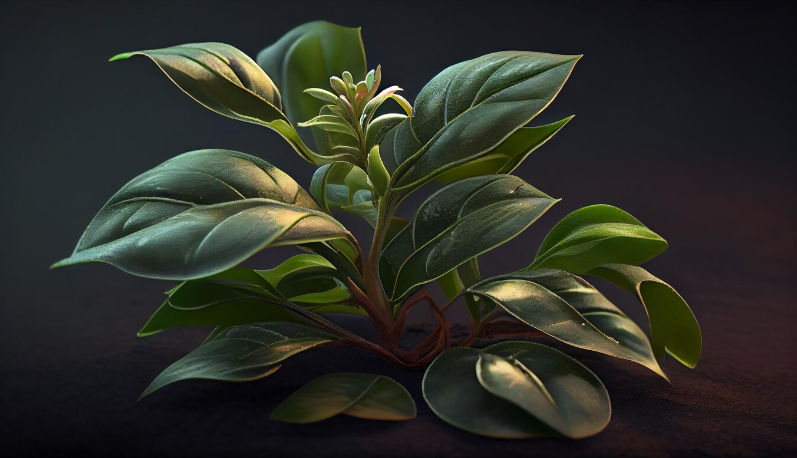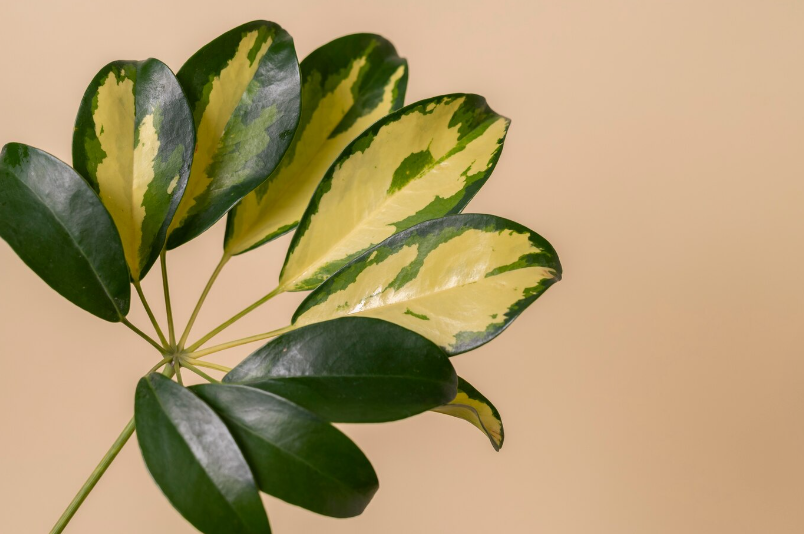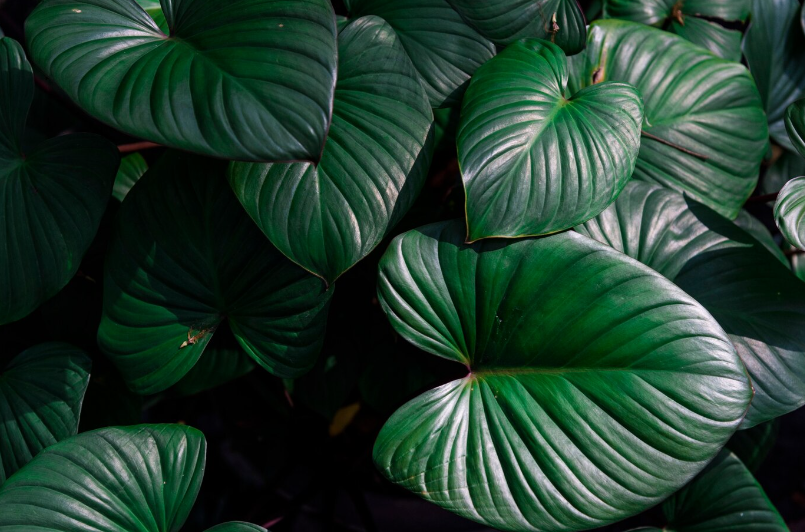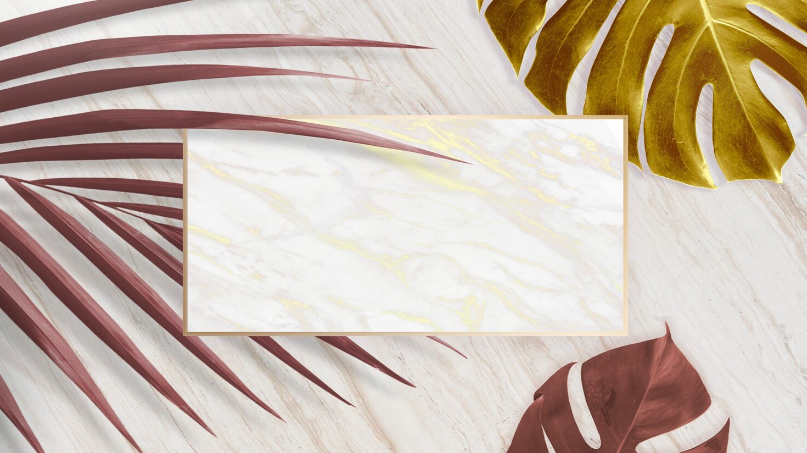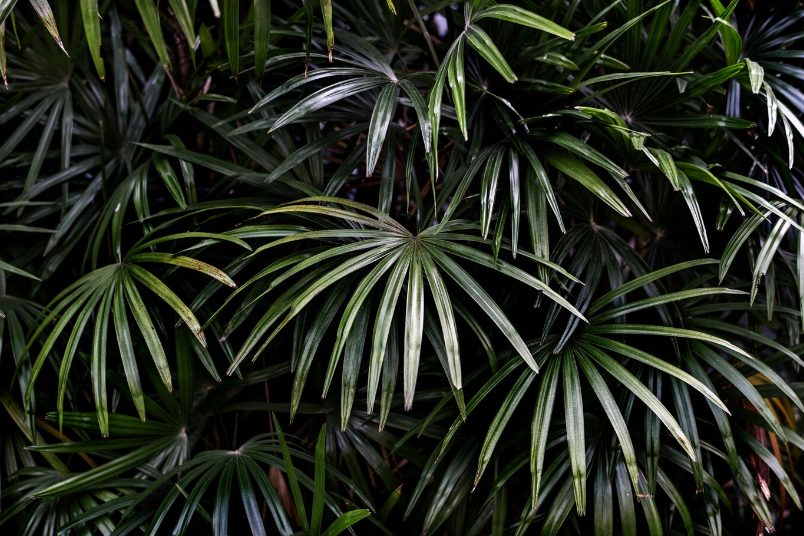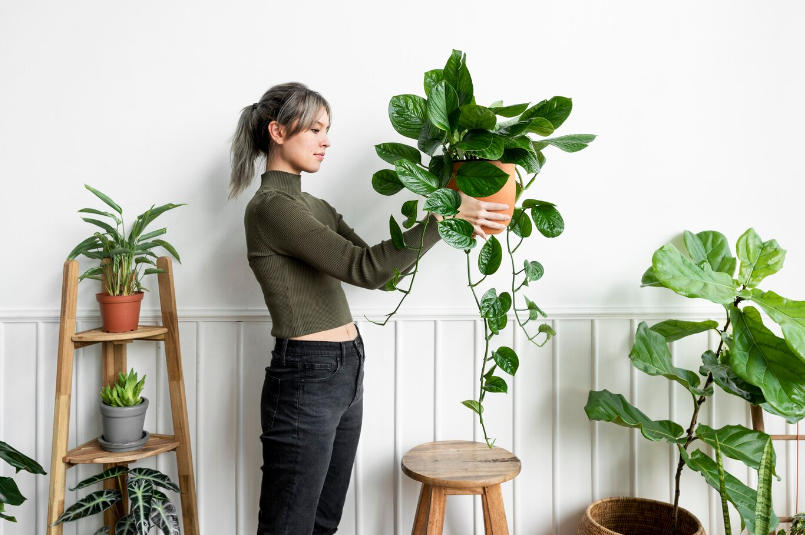The Diversity and Unique Traits of Philodendrons
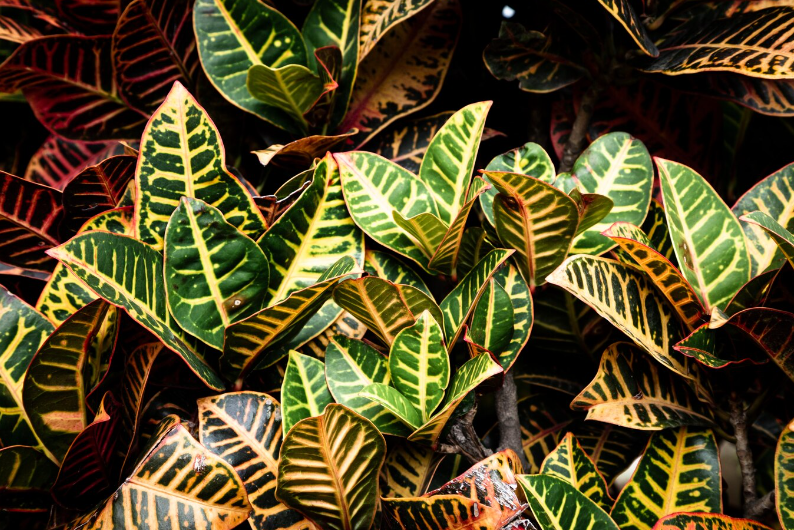
Philodendrons are a diverse group of flowering plants that belong to the Araceae family. They are native to the tropical regions of the Americas and are renowned for their unique traits and captivating beauty. With over 500 known species and countless cultivars, these plants offer an incredible variety of shapes, sizes, colors, and patterns.
One of the most striking features of philodendrons is their foliage. The leaves come in various forms, ranging from heart-shaped to elongated, and can be glossy, matte, or even velvety to the touch. Some species have variegated leaves with intricate patterns of contrasting colors, adding an extra dimension of visual interest. The vibrant green shades of philodendron foliage create a lush and tropical atmosphere, making them a popular choice for indoor and outdoor gardens alike.
In addition to their diverse foliage, philodendrons display an incredible adaptability to different environments. They are known for their ability to thrive in a wide range of light conditions, from low light to bright, indirect light. This makes them an excellent choice for indoor gardening, as they can tolerate the lower light levels typically found in homes and offices. Philodendrons are also relatively low-maintenance and can tolerate periods of drought, making them a resilient and forgiving choice for beginner gardeners.
Another fascinating trait of philodendrons is their ability to climb and cling onto surfaces. Many species of philodendrons are epiphytic, meaning they grow on other plants or trees in their natural habitat. They have specialized aerial roots that allow them to attach themselves to surfaces and absorb moisture from the air. This unique characteristic makes philodendrons an ideal choice for adding a vertical element to gardens, as they can be trained to climb up walls or trellises, creating a visually stunning display.
Overall, philodendrons are a remarkable group of plants that offer diversity, beauty, and unique traits. Whether you choose a compact trailing variety for your bookshelf or a large climbing specimen for your garden, philodendrons are sure to bring a touch of tropical allure and natural elegance to any space.
Unveiling the Unique Features of Philodendrons
Philodendrons, while known for their lush green foliage and easy-care nature, possess numerous unique features that set them apart from other houseplants.
- Aerial Roots: One distinctive trait of philodendrons is their ability to develop aerial roots. These roots grow from the stems or leaves of the plant and can absorb moisture and nutrients from the air, allowing the philodendron to thrive in a variety of environments.
- Varied Leaf Shapes: Philodendrons come in a wide range of leaf shapes, including heart-shaped, arrow-shaped, and oval-shaped. This diversity in foliage adds visual interest and allows plant enthusiasts to choose a variety that suits their personal preferences.
- Vibrant Colors: While green is the predominant color in philodendron leaves, some species feature variegated patterns of green, yellow, or white. These vibrant colors add a touch of elegance and can complement any interior design.
- Ability to Climb: Certain philodendron species have the ability to climb, thanks to their aerial roots. By attaching themselves to nearby surfaces, such as poles or trees, these philodendrons can grow vertically and create a stunning display of foliage.
- Air Purifying Qualities: Philodendrons have been found to be effective in improving indoor air quality by removing toxins such as formaldehyde and benzene from the air. This makes them an excellent choice for those seeking a natural and beautiful way to purify their living spaces.
- Easy Propagation: One of the unique features of philodendrons is their ability to propagate easily. Whether through stem cuttings, leaf cuttings, or air layering, propagating philodendrons is a simple and rewarding process, making it a popular choice among plant enthusiasts.
In conclusion, philodendrons stand out among houseplants due to their aerial roots, varied leaf shapes, vibrant colors, ability to climb, air purifying qualities, and easy propagation. Whether you’re a beginner or an experienced plant lover, there’s a philodendron variety that will surely captivate your heart and enhance the beauty of your living space.
The Hallmark Traits of Philodendron Species
Philodendron species are known for their diverse and unique traits. These traits make them popular among plant enthusiasts and collectors. Here are some of the hallmark traits of Philodendron species:
- Large Leaves: One of the most notable traits of Philodendron species is their large leaves. These leaves come in various shapes, sizes, and colors, ranging from deep green to variegated patterns.
- Leaf Structure: Philodendron species often have leaves with unique structural adaptations. Some species have fenestrations, which are holes or splits in the leaves, while others have deeply lobed or pinnate leaves.
- Vining Growth Habit: Many Philodendron species exhibit a vining growth habit, which makes them ideal for hanging baskets or training on support structures. Their vines can grow several feet long, creating a lush and trailing effect.
- Aerial Roots: Philodendron species are known for their ability to produce aerial roots. These roots emerge from the stems or nodes and can provide additional support for the plant when climbing or trailing.
- Tolerant of Low-Light Conditions: Another hallmark trait of Philodendron species is their ability to thrive in low-light conditions. They are well-suited for indoor environments with limited natural light, making them popular houseplants.
- Easy to Propagate: Philodendron species are relatively easy to propagate, making them a favorite among plant enthusiasts. They can be propagated from stem cuttings or through division, allowing growers to quickly expand their collections.
These hallmark traits make Philodendron species not only visually appealing but also adaptable and easy to care for. Whether you’re a beginner or an experienced plant lover, Philodendrons offer a wide range of options to explore and enjoy.
Understanding the Crystal-Like Features in Philodendrons
Philodendrons are known for their unique and diverse characteristics, and one of the most intriguing traits of some species is their crystal-like features. These crystal-like structures can be found on the leaves, stems, and even the flowers of certain philodendrons.
These crystal-like features are not actually real crystals, but rather specialized cells called idioblasts. Idioblasts are cells that contain various substances, such as calcium oxalate crystals, which give the appearance of crystals.
The formation of these idioblasts and crystal-like structures in philodendrons is still not fully understood by scientists. However, it is believed that these structures serve various purposes, including providing protection, deterring herbivores, and even aiding in the absorption of light.
One of the main functions of these crystal-like structures is protection. The sharp edges and abrasive surfaces of the crystals can deter insects and animals from feeding on the leaves or stems of the philodendron. Additionally, these crystals can also act as a physical barrier, preventing the loss of water through transpiration.
Another possible function of these crystal-like structures is to deter herbivores. When an animal tries to consume a philodendron leaf, the crystals can cause irritation and discomfort in the animal’s mouth or digestive system, deterring them from continuing to eat the plant.
Additionally, these crystal-like structures may also play a role in light absorption. The reflective surfaces of the crystals can help redirect and concentrate light onto the photosynthetic cells of the philodendron, maximizing the plant’s ability to convert light energy into chemical energy.
Overall, the crystal-like features in philodendrons are a fascinating and unique adaptation that serves multiple purposes. From protection to deterring herbivores, these structures play a crucial role in the survival and success of these plants in their natural habitats.
Next time you come across a philodendron with crystal-like features, take a closer look and marvel at the amazing adaptations that nature has created.
The Significance of Heart-Shaped Leaves in Philodendrons
One of the most distinguishing features of philodendrons is their heart-shaped leaves. These unique leaves have a significant role in the growth and survival of the plant.
The heart-shaped leaves of philodendrons have several benefits. First, their shape helps the plant maximize its surface area for photosynthesis. The broad surface of the leaves allows for more efficient absorption of sunlight, which is essential for the production of energy in the form of glucose.
In addition to their functional benefits, heart-shaped leaves also serve an aesthetic purpose. The symmetrical shape and vibrant green color of the leaves make them visually appealing, adding to the overall beauty of the plant. They are often used in floral arrangements and as decorative plants in homes and offices.
Furthermore, the heart shape of the leaves is symbolic of love and affection. This symbolism has made philodendrons popular as gifts for loved ones, especially on occasions such as Valentine’s Day or anniversaries. The heart-shaped leaves are seen as a representation of care and nurture.
| Benefits of Heart-Shaped Leaves in Philodendrons |
|---|
| Maximize surface area for photosynthesis |
| Enhance aesthetic appeal |
| Symbolize love and affection |
Exploring the Rarity and Beauty of Unique Philodendrons
Philodendrons are known for their diversity and unique traits, but there are some varieties that stand out even further with their rarity and exceptional beauty.
One such example is the Philodendron Pink Princess. This stunning plant features leaves with a mixture of green, black, and pink colors, creating an eye-catching display. The Pink Princess is highly sought after by collectors due to its limited availability and striking appearance.
Another rare and beautiful variety is the Philodendron Spiritus Sancti. This plant is endemic to a small region in Brazil and is considered one of the most elusive and coveted philodendrons in the world. Its leaves are dark green and glossy, with a unique shape that resembles a spearhead. Due to its limited supply and difficulty of propagation, the Spiritus Sancti is a prized possession among plant enthusiasts.
The Philodendron Gloriosum is another rare gem that attracts attention with its velvety leaves. The leaves of this plant are heart-shaped and covered in velvety hairs, giving them a shimmering appearance. The Gloriosum is native to Colombia and Ecuador and is highly valued for its unique texture and striking contrast between the lush green leaves and the white veins.
Lastly, White Knight Philodendron the is a rare and coveted variety that features leaves with a silvery-white coloration. It is known for its stunning foliage and is highly sought after by collectors. The White Knight requires specific conditions to thrive, adding to its rarity and desirability.
These are just a few examples of the rare and beautiful philodendrons that exist. Each variety has its own unique characteristics and allure, making them a treasure to add to any plant collection.
Spotlight on the Heartleaf Philodendron
The Heartleaf Philodendron (Philodendron hederaceum) is a popular houseplant known for its heart-shaped leaves and easy care requirements. Originating from the tropical regions of Central and South America, this plant has made its way into homes worldwide due to its attractive foliage and adaptability to different environments.
One of the standout features of the Heartleaf Philodendron is its ability to trail or climb, making it a versatile choice for decorating various spaces. Whether allowed to cascade down from a hanging basket or trained to climb up a trellis or moss pole, this philodendron adds a touch of greenery and elegance to any room.
In addition to its aesthetic appeal, the Heartleaf Philodendron is also known for its air-purifying qualities. Like other philodendrons, it helps cleanse the air by removing toxins such as formaldehyde and benzene, making it a great choice for improving indoor air quality.
Caring for a Heartleaf Philodendron is relatively easy, even for beginners. This plant thrives in bright but indirect light, making it suitable for most areas of the home. It can tolerate lower light conditions, but its growth may slow down. Watering should be done when the top inch of soil feels dry, ensuring that the plant is not sitting in standing water.
To promote healthy growth and prevent legginess, occasional pruning may be necessary. This can be done by cutting back stems to encourage bushier growth and removing any yellowed or damaged leaves. Fertilizing with a balanced houseplant fertilizer every two to four weeks during the growing season will also help keep the plant healthy and vibrant.
With its graceful trailing vines and easy care requirements, the Heartleaf Philodendron is a popular choice among plant enthusiasts and beginners alike. Whether displayed in a hanging basket or climbing up a support structure, this plant is sure to add a touch of natural beauty and tranquility to any indoor space.
Identifying the Unique Traits of the Heartleaf Philodendron
The Heartleaf Philodendron, scientifically known as Philodendron hederaceum, is a popular houseplant renowned for its distinctive traits. Here are some key features that make the Heartleaf Philodendron stand out:
- Heart-shaped Leaves: One of the most recognizable traits of the Heartleaf Philodendron is its heart-shaped leaves. These lush, green leaves have a glossy appearance and can grow up to 6 inches long.
- Vining Growth Habit: The Heartleaf Philodendron is a vining plant and enjoys climbing structures or cascading from hanging baskets. Its long, slender stems can reach lengths of several feet, making it a versatile and adaptable plant for various indoor spaces.
- Tolerant of Low Light: This Philodendron species is known for its ability to thrive in low light conditions. It can survive in areas with minimal natural light, making it an ideal choice for those dim corners of your home or office.
- Air Purifying Qualities: Like many other Philodendron species, the Heartleaf Philodendron is well-known for its air-purifying abilities. It can help remove toxins such as formaldehyde, benzene, and other indoor pollutants, making it a great choice for improving indoor air quality.
- Easy Care Requirements: The Heartleaf Philodendron is relatively easy to care for, making it suitable for both novice and experienced plant parents. It prefers well-draining soil, moderate humidity, and weekly watering, allowing it to thrive with minimal attention.
With its unique heart-shaped leaves, vining growth habit, and air-purifying qualities, the Heartleaf Philodendron is a delightful addition to any indoor space. Whether you’re a plant enthusiast or new to houseplants, this species is sure to bring beauty and a touch of nature to your home or office.
Care Requirements for the Heartleaf Philodendron
The Heartleaf Philodendron (Philodendron hederaceum) is a popular houseplant known for its heart-shaped leaves and trailing vines. This low-maintenance plant is native to the tropical regions of Central and South America and adapts well to indoor environments. Here are some care requirements to help you ensure the health and vitality of your Heartleaf Philodendron.
| Light | Water | Temperature | Humidity |
|---|---|---|---|
| Indirect, medium to bright light | Allow the top inch of soil to dry between waterings | Optimal temperature range of 65-85°F (18-29°C) | Prefers humidity levels between 40-60% |
Light: The Heartleaf Philodendron thrives in bright, indirect light but can tolerate lower light levels. Avoid direct sunlight as it can scorch the leaves. Place your plant near a window with filtered light or provide artificial grow lights if needed.
Water: It is important to allow the top inch of soil to dry out before watering your Heartleaf Philodendron. Overwatering can lead to root rot, so it is better to underwater than overwater. Ensure proper drainage and consider using a well-draining potting mix. Reduce watering during the winter months when growth slows down.
Temperature: The Heartleaf Philodendron prefers temperatures between 65-85°F (18-29°C). Protect the plant from drafts and extreme temperature fluctuations, which can cause leaf damage. Avoid placing it near heating or cooling vents.
Humidity: While the Heartleaf Philodendron can tolerate average household humidity, it appreciates higher levels. Mist the leaves occasionally or place the pot on a tray with pebbles and water to increase humidity. Avoid dry air conditions, especially during the winter months when indoor humidity tends to be lower.
Fertilizer: Feed your Heartleaf Philodendron with a balanced, water-soluble houseplant fertilizer once a month during the growing season. Follow the instructions on the fertilizer package for proper dilution and application.
Pruning: Trim back any unruly or leggy growth to maintain a compact and tidy appearance. You can also propagate new plants from the pruned cuttings.
Pests: Heartleaf Philodendrons are generally resistant to pests, but they can occasionally attract spider mites and mealybugs. Regularly inspect the leaves for signs of infestation and treat with a gentle insecticidal soap if needed.
By following these care guidelines, you can enjoy a thriving and beautiful Heartleaf Philodendron in your home. Its lush foliage and easy-care nature make it a perfect choice for both beginner and experienced plant enthusiasts.
The Heartleaf Philodendron in Popular Culture
The heartleaf philodendron has become a popular houseplant in recent years, not only for its easy care and adaptability but also for its prominent role in popular culture.
In movies and television shows, the heartleaf philodendron is often used as a visual representation of a vibrant and lush indoor environment. It is commonly shown growing in stylishly decorated homes and offices, adding a touch of natural beauty to the scene.
Additionally, the heartleaf philodendron has made appearances in various works of literature. In some novels, it symbolizes youth and growth, while in others, it represents the connection between humans and nature.
In the world of fashion and design, the heartleaf philodendron has also influenced trends. Its distinctive heart-shaped leaves have inspired the creation of patterns and prints, which can be found on clothing, accessories, and home decor items.
Furthermore, the heartleaf philodendron has gained popularity on social media platforms. It is often featured in aesthetically pleasing photos and posts, showcasing its beauty and versatility as a houseplant.
Overall, the heartleaf philodendron’s presence in popular culture highlights its widespread appeal and the joy it brings to people’s lives. Whether it’s in a movie, a book, or a fashionable design, this plant continues to captivate and inspire individuals across various forms of media.
Philodendron Leaf Variations: Beyond the Ordinary
When it comes to the world of philodendrons, there is a stunning array of leaf variations that go beyond the ordinary. These tropical plants are known for their lush foliage and unique growth patterns, making them a favorite among plant enthusiasts.
One of the most recognizable leaf variations is the heart-shaped leaf. This classic philodendron leaf shape is a symbol of love and affection, and it adds a touch of elegance to any space. Another popular leaf variation is the arrowhead shape, with its distinctive arrow-shaped tip. This leaf shape is not only visually striking but also provides a unique texture to the overall appearance of the plant.
Philodendrons also come in a variety of colors, adding another layer of diversity to their leaf variations. Some species have leaves that are a vibrant shade of green, while others boast striking patterns or even variegated colors. These variations in leaf color can give each philodendron a one-of-a-kind look, making them stand out in any collection.
In addition to the different shapes and colors, philodendron leaves can also differ in size and texture. Some species have larger leaves that create a bold and dramatic statement, while others have smaller leaves that create a more delicate aesthetic. The texture of the leaves can also vary, with some featuring a glossy finish and others having a more velvety or furry texture.
With such a diverse range of leaf variations, it’s no wonder that philodendrons continue to captivate plant lovers around the world. Whether you’re drawn to the classic heart-shaped leaf or prefer the bold colors and unique textures, there’s a philodendron out there that’s sure to capture your attention.
Philodendrons with Distinctive Leaf Shapes
The world of philodendrons is full of amazing diversity, and one of the most fascinating aspects is the wide range of leaf shapes that these plants exhibit. From heart-shaped to arrow-shaped, philodendrons are sure to captivate any plant enthusiast with their unique foliage.
One of the most distinctive leaf shapes is the split-leaf philodendron (Monstera deliciosa). Its large, deeply lobed leaves have earned it the nickname “swiss cheese plant” due to the numerous holes and slots that resemble the famous cheese. This tropical beauty is a statement piece, adding a touch of elegance and drama to any indoor space.
Another philodendron with a striking leaf shape is the horsehead philodendron (Philodendron bipinnatifidum). Its leaves are deeply dissected and resemble a horse’s head, giving it its unique name. This philodendron is a favorite among collectors for its unusual and eye-catching foliage.
The heartleaf philodendron (Philodendron hederaceum) is another popular variety known for its heart-shaped leaves. These glossy green leaves trail gracefully, making the heartleaf philodendron a popular choice for hanging baskets or as a trailing plant for shelves and bookcases.
The elephant ear philodendron (Philodendron domesticum) is aptly named for its large, broad leaves that resemble the ears of an elephant. This philodendron is a striking addition to any tropical garden or indoor space, with its impressive foliage commanding attention.
Lastly, the velvet-leaf philodendron (Philodendron hederaceum var. hederaceum) stands out for its velvety textured leaves. The leaves are a deep, lush green and have a soft, velvety feel when touched, making it a favorite among tactile plant enthusiasts.
Overall, philodendrons with distinctive leaf shapes bring an element of intrigue and beauty to any plant collection. Whether it’s the split-leaf’s unique holes, the horsehead’s striking resemblance, or the heartleaf’s trailing vines, these philodendrons are sure to leave you mesmerized by their incredible leaf shapes.
What Makes a Philodendron with 5 Points Stand Out?
A Philodendron with 5 points is a unique and special variation of the popular houseplant. While most Philodendrons have leaves with a single point or multiple lobes, a Philodendron with 5 points has leaves that resemble a hand, with 5 distinct fingers or lobes.
This distinct trait sets the 5-point Philodendron apart from other varieties, making it a standout plant in any collection. The unusual leaf shape creates a captivating visual display, adding intrigue and charisma to any indoor space.
In addition to its eye-catching appearance, the 5-point Philodendron offers other benefits. The multiple lobes provide increased surface area for the plant’s photosynthesis, allowing it to absorb more sunlight and produce energy more efficiently. This can result in faster and healthier growth compared to Philodendrons with fewer points.
Another notable feature of the 5-point Philodendron is its adaptability. Like other Philodendrons, this variation thrives in a variety of growing conditions, making it a suitable choice for both novice and experienced plant enthusiasts. It can tolerate low light conditions, making it ideal for rooms with less natural sunlight.
In terms of care, the 5-point Philodendron requires minimal attention. It prefers well-draining soil and should be watered moderately, allowing the top inch of soil to dry out before watering again. Regular fertilization with a balanced houseplant fertilizer will help maintain its healthy growth.
Overall, the 5-point Philodendron is a captivating and low-maintenance plant that adds a touch of uniqueness and beauty to any indoor space. Its distinct leaf shape, adaptability, and easy care requirements make it a popular choice among plant lovers looking to add a standout Philodendron to their collection.
The Most Aesthetically Pleasing Philodendron Varieties
Philodendrons are beloved for their wide array of stunning foliage. Here are some of the most aesthetically pleasing varieties:
- Philodendron Birkin: This variety features striking green leaves with creamy-white pinstripes, creating a bold and modern look.
- Philodendron Pink Princess: With its deep green leaves adorned with vibrant pink variegation, this philodendron variety is a true eye-catcher.
- Philodendron Moonlight: Known for its bright yellow foliage, this variety adds a pop of color and a tropical vibe to any indoor space.
- Philodendron White Knight: With its glossy, heart-shaped leaves in shades of green and white, this variety adds a touch of elegance to any room.
- Philodendron Micans: This trailing variety showcases velvety, deep green leaves with a bronze hue, lending a touch of sophistication to hanging baskets or as a climbing plant.
These are just a few examples of the aesthetically pleasing philodendron varieties available. Each one brings its own unique beauty and charm, making them a popular choice among houseplant enthusiasts.
Exploring the Wide Array of Philodendron Types
Philodendrons are a diverse group of plants that bring natural beauty and a touch of the tropical to any indoor space. With over 400 recognized species, these unique plants offer a wide array of sizes, shapes, and colors to suit any taste and style.
One standout type of philodendron is the “Pink Princess” philodendron, known for its stunning pink and green variegated leaves. This eye-catching plant is sure to be a statement piece in any home or office.
Another popular type is the “Silver Sword” philodendron, featuring long, narrow leaves with silver-colored veins. This plant adds a touch of elegance and sophistication to any room, and its unique coloration makes it a true standout.
If you’re looking for a philodendron with a more compact size, the “Brazil” philodendron might be the perfect choice. This petite plant features vibrant green leaves with bold yellow stripes, adding a cheerful pop of color to your space.
Explore the intriguing world of the Philodendron Brasil, a must-have for enthusiasts.
For those seeking a truly unique philodendron, the “Birkin” is an exquisite option. Its dark green leaves are adorned with striking white pinstripes, resembling the fashionable patterns found on a tailored suit.
Whether you prefer a philodendron with vibrant colors or a more subtle and elegant look, the wide array of philodendron types ensures that there is a perfect plant for every plant enthusiast. With their easy care requirements and ability to thrive in a variety of indoor conditions, philodendrons are an excellent choice for both beginner and experienced plant lovers alike.
The Sheer Variety of Philodendron Species
Philodendrons are known for their vast array of different species, each with its own unique traits and characteristics. From the large and imposing Philodendron bipinnatifidum to the delicate and trailing Philodendron micans, there is truly a philodendron for every aesthetic preference and care level.
One of the most distinctive features of philodendrons is their leaf shape. Some species, like Philodendron hederaceum, have heart-shaped leaves, while others, such as Philodendron erubescens, have elongated and pointed leaves. There are also philodendrons with deeply lobed leaves, like Philodendron selloum, and those with smooth-edged leaves, like Philodendron scandens.
The colors and patterns of philodendron leaves are equally diverse. Many species have lush, deep green leaves, which give them a classic and timeless appearance. However, there are also species with variegated leaves, featuring stripes, spots, or marbled patterns in shades of cream, yellow, or pink. Philodendron brasil and Philodendron lemon lime are popular examples of variegated philodendron species.
Another fascinating aspect of philodendrons is their growth habit. Some species, like Philodendron bipinnatifidum and Philodendron selloum, can grow into large, tree-like plants with massive leaves that command attention in any space. On the other hand, there are trailing philodendron species, like Philodendron cordatum and Philodendron micans, which are perfect for hanging baskets or cascading down shelves.
Finally, the care requirements of philodendrons vary from species to species. While many philodendrons are relatively low-maintenance and can tolerate a range of light and humidity levels, there are also species that require specific conditions to thrive, such as bright indirect light or high humidity. It’s essential to research the specific care needs of each philodendron species to ensure that it thrives in its environment.
In summary, the sheer variety of philodendron species is both impressive and captivating. From their diverse leaf shapes and colors to their different growth habits and care requirements, philodendrons offer something for every plant lover. Whether you prefer a towering tree-like philodendron or a delicate trailing variety, there is a philodendron species waiting to be discovered.
How to Differentiate Among Philodendron Varieties
Philodendrons are a diverse group of plants with many unique traits. There are several key factors to consider when trying to differentiate among different philodendron varieties:
Leaf shape: One of the easiest ways to differentiate philodendron varieties is by examining the shape of their leaves. Some varieties have broad heart-shaped leaves, while others may have long, narrow leaves or even deeply lobed leaves. Pay attention to the shape of the leaves to help identify different varieties.
Leaf color: Another distinguishing feature of philodendron varieties is the color of their leaves. Some varieties have vibrant green leaves, while others may have variegated or even burgundy-colored leaves. The color of the leaves can be a helpful clue in identifying different types of philodendrons.
Growth habit: Philodendron varieties can vary in their growth habit. Some varieties are vining and will naturally trail or climb, while others are more upright in their growth habit. Examining how a philodendron grows can provide insight into its variety.
Size: Philodendron varieties can also vary in size. Some varieties are petite and compact, making them ideal for small spaces or terrariums. Others can grow to be quite large and may require more space to thrive. Consider the size of a philodendron plant when trying to identify its variety.
Unique characteristics: Lastly, some philodendron varieties have unique characteristics that set them apart. This could include unusual leaf patterns, distinctive foliage texture, or even specific growth patterns. These unique traits can be helpful in determining the variety of a philodendron.
By paying attention to leaf shape, color, growth habit, size, and unique characteristics, it is possible to differentiate among different philodendron varieties. This knowledge can help plant enthusiasts and collectors identify and care for their philodendrons with greater precision.
Philodendron Classification 101
The genus Philodendron is a diverse group of tropical plants that belongs to the family Araceae. With over 400 species, Philodendrons are known for their unique traits and ability to thrive in various environments.
The classification of Philodendrons can be complex, as it is constantly evolving as new species are discovered and studied. However, the basic classification is divided into different subgroups based on the shape and growth habit of the plants.
One of the main subgroups is the climbing philodendrons, which have long trailing stems and aerial roots that allow them to climb and attach to trees or other structures for support. These philodendrons include popular species like Philodendron scandens and Philodendron hederaceum.
Another subgroup is the tree philodendrons, which have a more upright growth habit and can develop a trunk-like structure over time. These philodendrons include species like Philodendron bipinnatifidum, also known as the “Selloum” or “Hope” philodendron.
There are also shrub-like philodendrons, which have a compact and bushy growth habit. These philodendrons have shorter stems and often form dense clumps. Examples of shrub-like philodendrons include Philodendron erubescens and Philodendron selloum.
Lastly, there are ground-covering philodendrons, which have a low and sprawling growth habit. These philodendrons are often used as ground cover in tropical gardens or as trailing plants in hanging baskets. Philodendron micans and Philodendron cordatum are examples of ground-covering philodendrons.
While these subgroups provide a general classification of Philodendrons, it is important to note that there are many variations and hybrids that blur the lines between these categories. The diversity and unique traits of Philodendrons make them a fascinating group of plants to explore and cultivate.
The Rarity and Demand for Philodendrons
Philodendrons are highly sought after by plant enthusiasts due to their rarity and unique traits. These tropical plants are known for their exotic look, vibrant colors, and striking foliage. With such diversity in their appearance, philodendrons have become a favorite among collectors and gardeners alike.
One of the reasons why philodendrons are so rare is because they are native to tropical rainforests, making them difficult to source and cultivate. Their specific growing conditions, such as high humidity and indirect light, require careful attention and expertise. Additionally, their slow growth rate adds to their scarcity, as it can take several years for a philodendron to reach maturity.
The demand for philodendrons has been steadily increasing in recent years, as more people have become interested in urban gardening and indoor plants. Philodendrons are not only aesthetically pleasing but also offer a range of benefits, such as improving air quality and reducing stress. These factors have contributed to their rising popularity and scarcity in the plant market.
Collectors and plant enthusiasts often vie for rare and elusive philodendron cultivars, willing to pay high prices to add them to their collections. Some of the most sought-after varieties include the Philodendron Pink Princess, Philodendron White Knight, and Philodendron Gloriosum. These plants feature unique color patterns and leaf shapes that make them highly coveted and hard to find.
As the demand for philodendrons continues to grow, it is important for enthusiasts to support sustainable sourcing and cultivation practices. This ensures the conservation of these rare plants for future generations to enjoy. Whether you are a collector or simply love the beauty of philodendrons, their rarity and demand make them a valuable addition to any plant collection.
Why Some Philodendrons Are Considered Rare
The world of philodendrons is incredibly diverse, with numerous species and cultivars to choose from. However, there are certain philodendrons that are considered rare and highly sought after by plant collectors and enthusiasts. These rare philodendrons possess unique traits that set them apart from other varieties.
One reason why some philodendrons are considered rare is due to their limited availability in the market. These plants may be rare in their natural habitat or difficult to propagate, making them less commonly found in nurseries or garden centers. Their scarcity adds to their desirability and makes them highly coveted among collectors.
Another factor that contributes to the rarity of certain philodendrons is their distinctive features and characteristics. Rare philodendrons may have unique leaf shapes or colors that are not commonly found in other varieties. They may also have rare variegation patterns or unusual growth habits that make them stand out from the crowd.
Furthermore, some rare philodendrons have historical or cultural significance. These plants may have been discovered in remote regions or have a long history of cultivation by indigenous people. The rarity of these philodendrons adds to their value and makes them prized possessions for collectors who appreciate their cultural and historical significance.
It is important to note that rarity does not necessarily equate to superiority or beauty. Every philodendron, regardless of its rarity, has its own unique charm and appeal. Collectors and enthusiasts value rare philodendrons for their uniqueness and the thrill of acquiring something truly special.
In conclusion, some philodendrons are considered rare due to their limited availability, distinctive traits, and historical significance. These rare philodendrons are highly sought after by plant enthusiasts and collectors who appreciate their uniqueness and value the opportunity to own something truly exceptional.
Factors Contributing to the High Cost of Certain Philodendrons
There are several factors that contribute to the high cost of certain philodendrons in the market. Understanding these factors can help explain why some philodendrons are more expensive than others.
- Rarity: One of the main factors is the rarity of certain philodendron species or cultivars. Some philodendrons are found in limited quantities in their natural habitats, making them rare and highly sought after by collectors. The more rare a philodendron is, the higher its price can be.
- Uniqueness: Philodendrons with unique traits or characteristics tend to be more costly. This includes philodendrons with unusual leaf shapes, colors, or patterns that make them stand out from other plants. Breeders and collectors are willing to pay a premium for these distinctive plants.
- Demand: Another significant factor is the demand for certain philodendrons. If a particular philodendron has gained popularity and is in high demand, its price will naturally increase. Philodendrons that are perceived as trendy or hard to find can command higher prices due to the competitive market.
- Propagation Difficulty: Some philodendrons are challenging to propagate, which contributes to their high cost. If a philodendron requires specialized techniques or conditions to reproduce, it becomes harder for growers to produce large quantities of plants. The limited supply drives up the price.
- Age and Size: The age and size of a philodendron can also impact its price. Older philodendrons that have been cultivated for a longer time tend to be more expensive, particularly if they have developed into large, mature specimens. The growth and care required to reach these sizes contribute to their higher cost.
Overall, a combination of rarity, uniqueness, demand, propagation difficulty, and age/size contribute to the high cost of certain philodendrons. These factors vary from plant to plant, resulting in a wide range of prices in the philodendron market.
The Pink Philodendron: A Case Study in Plant Popularity
The Pink Philodendron is one of the most sought-after plants among plant enthusiasts and collectors. With its stunning pink foliage, it has quickly gained a reputation for its unique beauty and charm. This plant, also known as the “Blushing Philodendron,” has become a popular choice for many indoor plant lovers.
What sets the Pink Philodendron apart from other varieties is its vibrant pink leaves. The leaves can range in color from soft shades of pink to deeper, more intense hues. This variation in color adds to the allure and desirability of this particular variety.
Another reason for the popularity of the Pink Philodendron is its ease of care. Like other Philodendron varieties, it is a low-maintenance plant that thrives in a variety of environments. It can tolerate lower light conditions and doesn’t require frequent watering, making it the perfect choice for both novice and experienced plant owners.
Furthermore, the Pink Philodendron is known for its air-purifying properties. As with other plants in the Philodendron family, it helps to remove toxins from the air, creating a healthier indoor environment. This additional benefit has contributed to its growing popularity, as people are becoming more conscious of the importance of indoor air quality.
Due to its high demand, the Pink Philodendron can be challenging to find and may come with a higher price tag compared to other Philodendron varieties. However, many plant enthusiasts are willing to invest in this stunning plant to add a touch of pink and elegance to their indoor spaces.
In conclusion, the Pink Philodendron has become a case study in plant popularity due to its unique pink foliage, ease of care, and air-purifying properties. Its desirability among plant enthusiasts and collectors continues to grow, making it a prized addition to any indoor plant collection.
Q&A:
What are some unique traits of philodendrons?
Philodendrons have a variety of unique traits, such as their large, glossy leaves, their ability to adapt to different lighting conditions, and their capability to purify indoor air.
How many species of philodendrons are there?
There are hundreds of species of philodendrons, with new ones still being discovered. Some popular species include Philodendron hederaceum, Philodendron bipinnatifidum, and Philodendron scandens.
What is the diversity of leaf shapes and sizes in philodendrons?
Philodendrons exhibit a wide range of leaf shapes and sizes. While some have large, heart-shaped leaves, others have slim, elongated leaves. Additionally, some species have deeply lobed or split leaves.
How do philodendrons make ideal houseplants?
Philodendrons are popular as houseplants because they can thrive in low to moderate light conditions. They also have low water requirements and can tolerate infrequent watering, making them an ideal choice for busy individuals.
What are some tips for caring for philodendrons?
To care for philodendrons, it is important to place them in a location with bright, indirect light. They should be watered thoroughly, allowing the soil to dry slightly between waterings. Additionally, it is beneficial to mist their leaves occasionally to increase humidity.
What are some unique traits of Philodendrons?
Philodendrons have a wide range of unique traits, including their attractive foliage, air-purifying abilities, and adaptability to various indoor environments.
What is the diversity like among Philodendrons?
The diversity among Philodendrons is vast, with over 400 known species and countless cultivars. They come in different sizes, shapes, and colors, making them a popular choice among plant enthusiasts.
